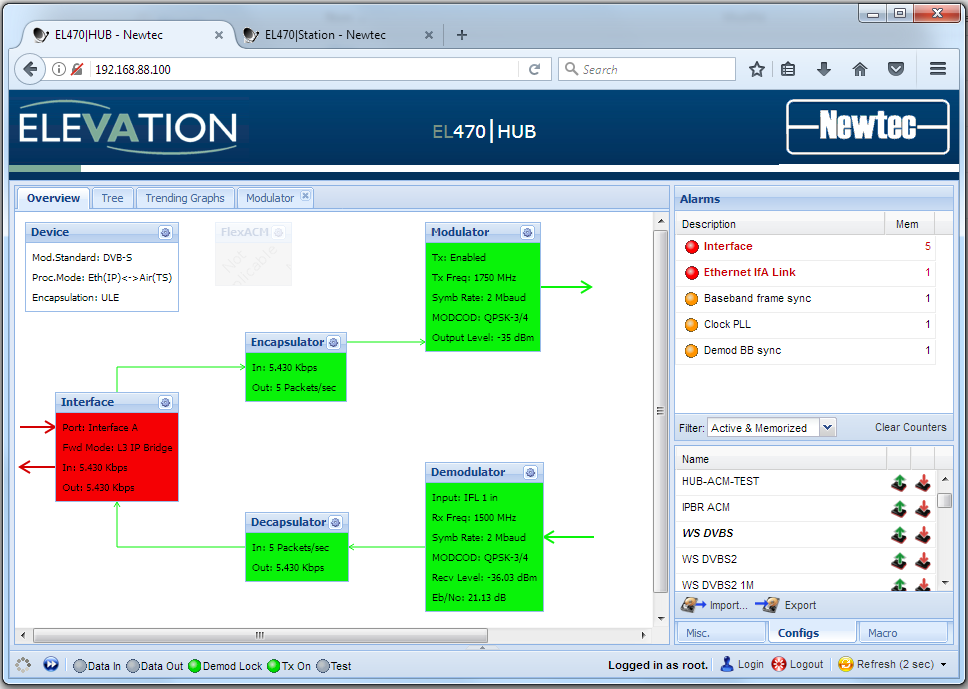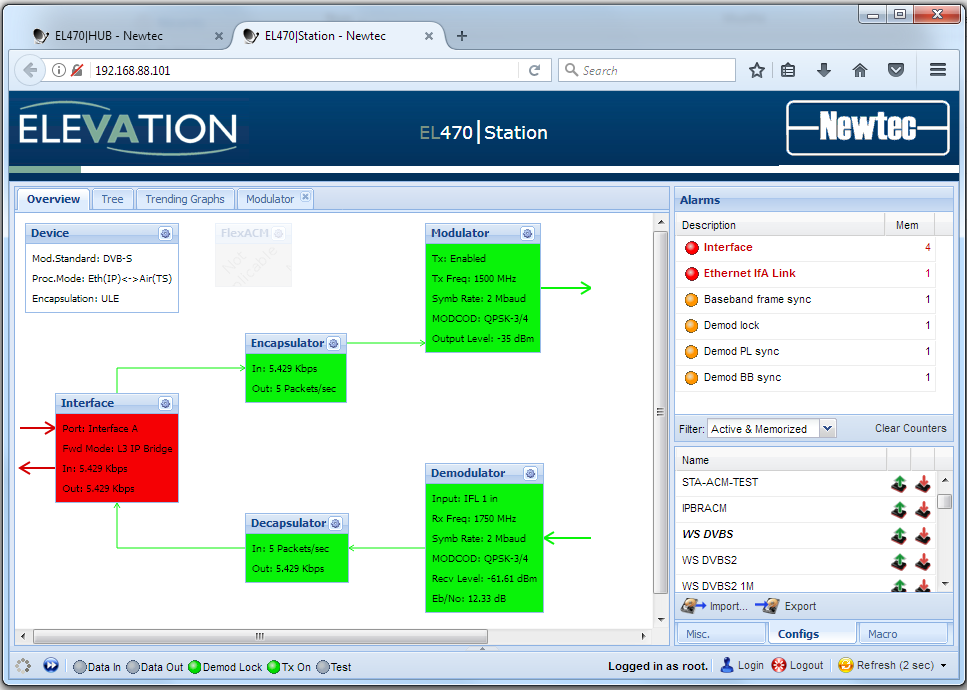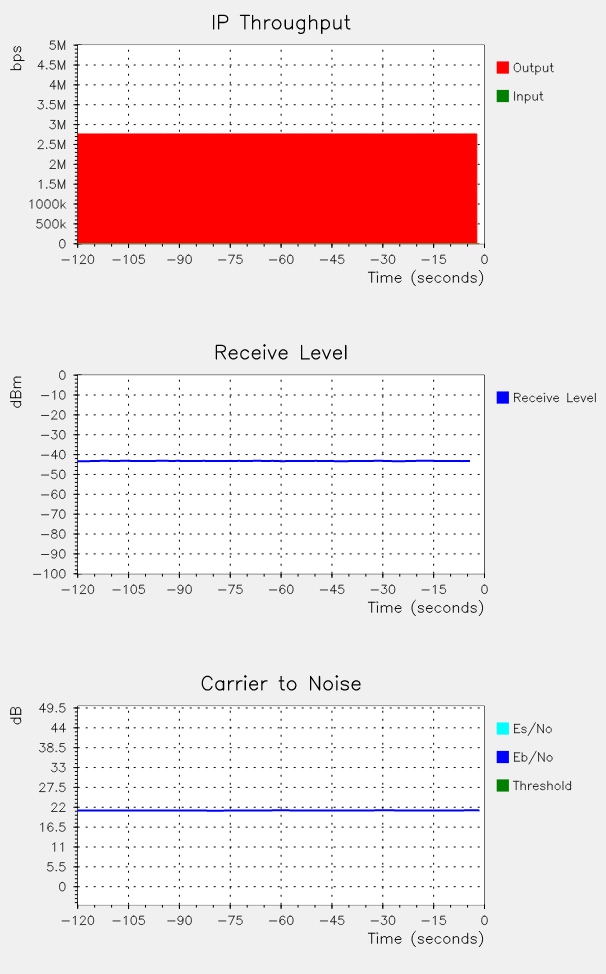Work environment » History » Version 7
« Previous -
Version 7/26
(diff) -
Next » -
Current version
SANCHEZ, Eduardo, 03/25/2017 07:42 PM
Emulation architecture¶
So far, the data transmission and reception were simulated by LabView functions. In this section, the data modulation and demodulation are carried out by EL470 satellite modems. These modems are configured to operate in compliance with the DVB-S standard, i.e., performing packet multiplying, data encoding and QPSK modulation. Moreover, the satellite channel is implemented in LabView.
Figure XXX shows the architecture used to evaluate the satellite channel emulator performance. Modem A represents a zzzzz and transmit a QPSK signal
The QPSK signal is down-converted to a baseband signal and sampled in order to process it
According to a given Eb/No value, white Gaussian noise is added to the signal
In addition, the re-transmission is retarded to emulate the satellite delay.
Finally the noisy delayed signal is received by the Modem B where the signal is demodulated, the error correcting is performed and data is recovered

Figure 1. Emulation architecture
Device description¶
Modem configuration¶
The modems are configured for using DVB-S in a Single Channel Per Carrier (SCPC) scheme, i.e., the forward and return links uses DVB-S and there is no Demand Assigned Multiple Access (DAMA) since only one terminal is sending out data over the carrier.
The modem configuration interface is accessed via a web browser using the IP address as can be seen in Figures 2 and 3. The interface allows users to select the modulator/demodulator parameters such as the carrier frequency, the symbol rate, the modulation, etc.

Figure 2. Modem A configuration

Figure 3. Modem B configuration
- Modulator
- Carrier frequency: 1.75 GHz
- Symbol rate: 2 Mbauds
- Modulation: QPSK
- Coding rate: ¾
- Roll-off factor: 0.35
- Output power: -35 dBm
- Demodulator
- Carrier frequency: 1.50 GHz
- Symbol rate: 2 Mbauds
- Modulation: QPSK
- Coding rate: ¾
- Roll-off factor: 0.20
- Output power: -35 dBm
- Modulator
- Carrier frequency: 1.50 GHz
- Symbol rate: 2 Mbauds
- Modulation: QPSK
- Coding rate: ¾
- Roll-off factor: 0.35
- Output power: -35 dBm
- Demodulator
- Carrier frequency: 1.75 GHz
- Symbol rate: 2 Mbauds
- Modulation: QPSK
- Coding rate: ¾
- Roll-off factor: 0.20
- Output power: -35 dBm
Furthermore, the configuration interface provides graphic tools to monitor the modem status. For instance, the IP throughput, the carrier-to-noise ratio at the demodulator input and the received output power are plotted as shown in Figure qqq.

Figure 2. Modem status
